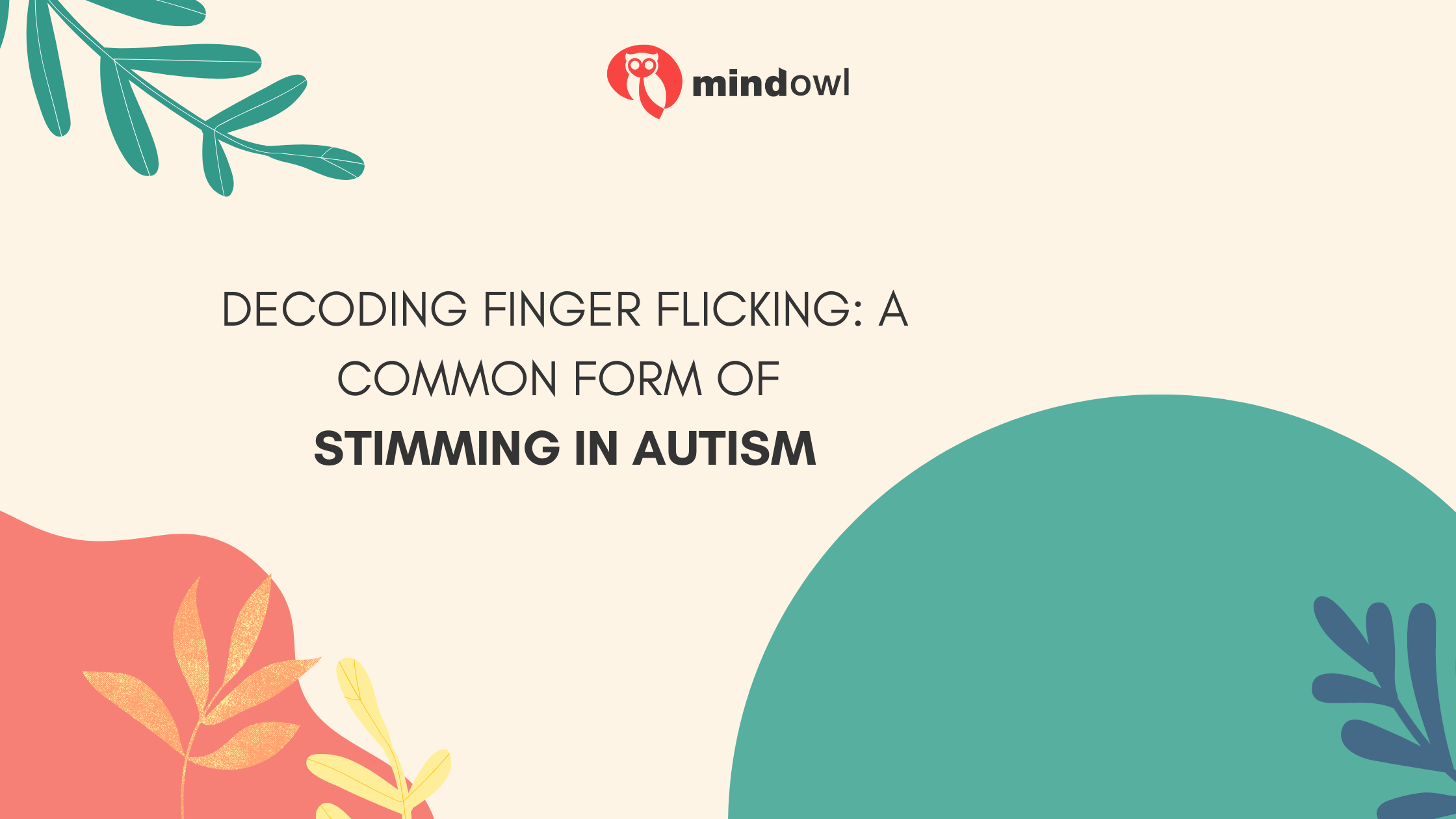Autism is a spectrum disorder that affects millions of people worldwide. One common characteristic of autism is stimming, which stands for self-stimulatory behavior. Stimming helps individuals with autism cope with sensory overload, anxiety, and other challenges they may face. In this article, we’ll delve into the world of stimming and focus on a specific form of it – finger flicking.
What is Stimming?
Stimming is a set of self-soothing behaviors that people with autism engage in. It’s a way for them to regulate their sensory experiences and emotional responses. Stimming can take various forms, from rocking and hand-flapping to repetitive vocal sounds and, of course, finger flicking. These behaviors serve a crucial purpose for individuals with autism, helping them manage stress, anxiety, and sensory overstimulation.
The Importance of Understanding Stimming
Understanding stimming and its various forms is essential for everyone, from caregivers and family members to teachers and peers. This knowledge fosters acceptance and support, making it easier for individuals with autism to navigate the world around them. Let’s take a closer look at finger flicking and its role in the stimming spectrum. For a deeper look at stimming and its other forms, check out https://www.autismparentingmagazine.com/.
Finger Flicking: A Common Form of Stimming
Finger flicking is a repetitive movement involving the fingers. It’s a common stimming behavior among individuals with autism, but it can be misunderstood or mistaken for fidgeting or restlessness. Here’s what you need to know about finger flicking and its significance:

The Physical Act of Finger Flicking
Finger flicking typically involves moving one or more fingers in a rhythmic and repetitive manner. It can look like flicking one’s fingers up and down, side to side, or tapping them together. This motion may seem simple, but it serves a purpose.
Sensory Regulation
Individuals with autism often experience heightened sensitivity to sensory input. They can become overwhelmed by lights, sounds, textures, and other stimuli that most people might not even notice. Finger flicking can help regulate sensory input by providing a repetitive and predictable movement. It’s a way for them to create a soothing rhythm that counters the chaos of the outside world.
Emotional Regulation
Apart from sensory regulation, finger flicking also aids in emotional regulation. When someone with autism is anxious, stressed, or upset, finger flicking can serve as a form of self-soothing. The repetitive motion helps them cope with their emotions, much like how other people might engage in deep breathing or counting to ten.
Communication and Expression
Finger flicking can also be a form of nonverbal communication. It may signal to others that the individual is feeling overwhelmed, anxious, or needs a break. Recognizing this form of expression can be crucial in offering support or providing a safe space for the person to regain their composure.
Social Stigma and Misconceptions
Despite its importance, finger flicking and other stimming behaviors often face social stigma and misconceptions. People who aren’t familiar with autism may misinterpret these actions as odd or disruptive. It’s vital to address these misconceptions and promote understanding and acceptance.
Challenging Misconceptions
To challenge the misconceptions surrounding stimming, including finger flicking, it’s essential to raise awareness. Educating the community and providing accurate information about the significance of these behaviors can lead to a more inclusive and supportive environment for individuals with autism.
How to Respond to Finger Flicking
If you encounter someone engaging in finger flicking, it’s important to respond with empathy and understanding. Here are some tips for how to react to this common stimming behavior:
1. Observe and Learn
Take the time to observe and understand the individual’s specific patterns of finger flicking. Each person with autism is unique, and their stimming behaviors may vary. Learning their preferences and triggers can help you provide better support.
2. Offer a Safe Space
Create a safe and comfortable space where the individual can engage in their finger flicking without judgment. This can be especially helpful in sensory-overloading situations, such as crowded places.
3. Communicate Openly
Encourage open communication with the individual and those around them. If they are comfortable, they can explain their needs and preferences regarding finger flicking. This can help foster understanding and support.
4. Be Patient
Stimming behaviors, including finger flicking, may not be something the individual can control easily. Be patient and understanding, avoiding pressure or negative reactions.
The Benefits of Finger Flicking
Finger flicking offers several benefits for individuals with autism:
1. Stress Reduction
Engaging in finger flicking can reduce stress and anxiety, helping individuals stay calm in challenging situations.
2. Self-Soothing
It serves as a form of self-soothing, allowing individuals to cope with emotional distress and sensory overload.
3. Communication
It can act as a nonverbal means of communication, letting others know about the individual’s emotional state and needs.
4. Focusing
In some cases, finger flicking may help individuals concentrate and focus on tasks.
Embracing Neurodiversity
Finger flicking, as a form of stimming, serves as a powerful reminder of the importance of embracing neurodiversity. Every individual, regardless of whether they are on the autism spectrum or not, possesses unique qualities and characteristics. Rather than viewing these differences as deficits, it’s crucial to celebrate them as strengths that contribute to the richness of human experience.
When we embrace neurodiversity, we acknowledge that there is no one “normal” way to experience the world. Instead, there are many ways, each offering valuable perspectives. Finger flicking and other stimming behaviors are part of this diverse tapestry of human expression. By recognizing and accepting these behaviors, we create a more inclusive and compassionate world.
Furthermore, embracing neurodiversity can lead to more innovative and adaptive solutions in various fields, as individuals with autism often possess distinct strengths and talents. These can range from a keen eye for detail to a deep focus and dedication to specific areas of interest.
Conclusion
Decoding finger flicking and understanding its role as a common form of stimming in autism is crucial for building a more inclusive and accepting society. By promoting awareness and offering support, we can help individuals with autism navigate their world with greater ease and confidence. Remember, finger flicking is not just a random gesture; it’s a powerful tool for self-regulation and communication. Embracing it is a step toward a more understanding and compassionate world for all.
MindOwl Founder – My own struggles in life have led me to this path of understanding the human condition. I graduated with a bachelor’s degree in philosophy before completing a master’s degree in psychology at Regent’s University London. I then completed a postgraduate diploma in philosophical counselling before being trained in ACT (Acceptance and commitment therapy).
I’ve spent the last eight years studying the encounter of meditative practices with modern psychology.

